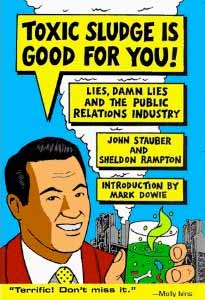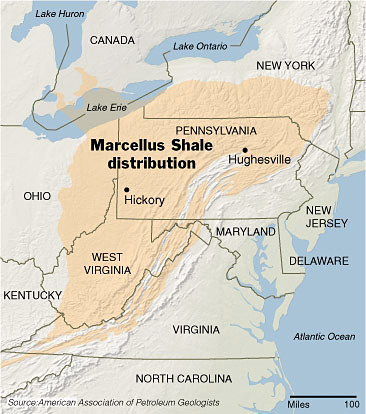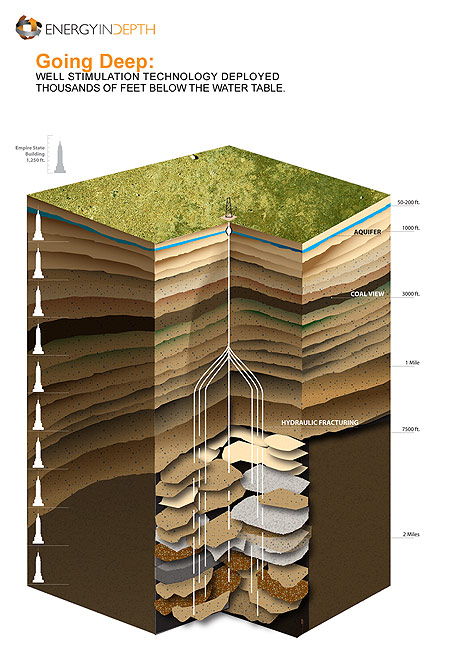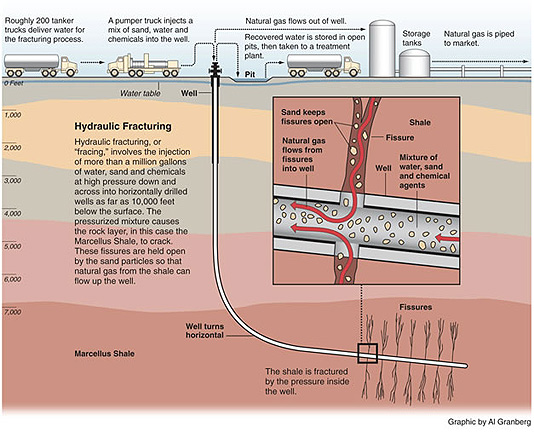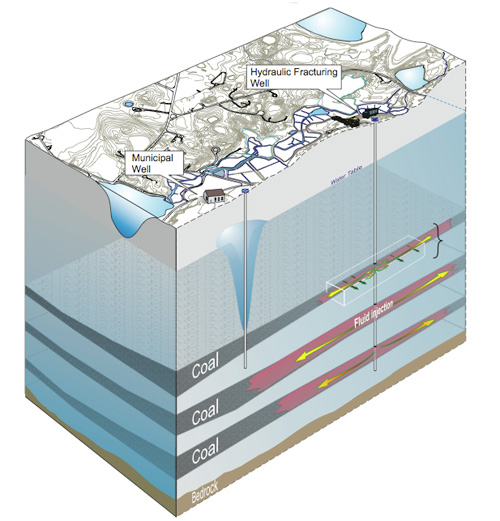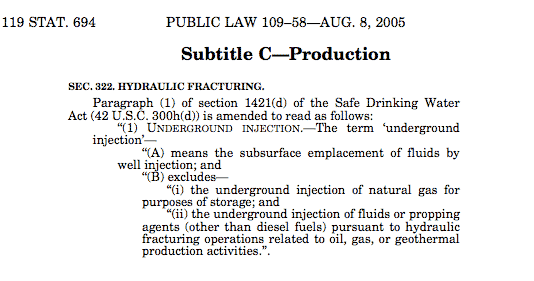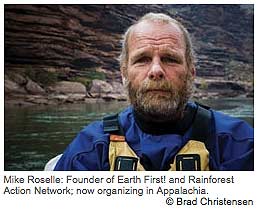Biblio
A chewy candy bar with the ironic name Toxic Waste Nuclear Sludge has been recalled due to concerns that the bars contain elevated levels of lead. Here is the press release from the U.S. Food and Drug Administration. No this is not a Yes Men art work.
Candy Dynamics, distributors of Toxic Waste® Nuclear Sludge® chew bars, has issued a recall of all lots, sizes and flavors of Nuclear Sludge® due to levels of lead that exceed the FDA standard. In addition, the company is discontinuing Nuclear Sludge®. Click here for more information.
Maureen Reilly of the Canadian listserv Sludge Watch commented:
The Toxic Waste candy that was recalled had only 0.24 ppm lead.
The EPA allows 400 ppm lead in children's play soil.
And the EPA even allowed sewage sludge compost containing 237 ppm lead (that's 1000 times more than the level in the candy) to be spread on childrens bare soil yards for poor black families in Baltimore.
The candy producer had the decency to call the candy Toxic Waste....unlike the sludge industry which calls its stuff that is 1000 times more contaminated: Beneficial Use Biosolids Organic Compost. (see Sourcewatch article).
The EPA should order a recall of this very real toxic sludge ...
Maureen Reilly (commenting on Howard Portnoy. "Alert: “Toxic Waste” candy recalled due to fears of lead contamination." Examiner.com. Jan. 17, 2011.
See: Organic Consumers Association. "Toxic sludge is good for you?". 2010.
See: Stauber, John, and Sheldon Rampton. Toxic Sludge is Good For You: Lies, Damn Lies and the Public Relations Industry. Common Courage Press, 2002. Print.
See: Patrick Trahey. "Sewage Sludge Everlasting." In These Times. April 19, 2010.
The Gates of Hell
This pit of fire that has been burning for 40 years looks more like something out or Mordor than Turkmenistan. But the burning crater of natural gas began shortly after a Russian drilling rig collapsed into the Underworld and no one knew what to do.
Having opened this huge poisonous gas cavern up, the atmosphere and the nearby residents in the village of Derweze decided the next logical move would be to set this huge crater on fire, and it has been burning ever since.
Here’s video of some tourists enjoying the incredible, football-field-wide hole to hell (not literally).
The Centralia Underground Coal Fire
Our former publisher and Pennsylvanian Bill Coffin used to talk about this one all the time, so I have been familiar with its existence for some time. Nevertheless, it’s completely nuts. Like the Gates of Hell, it has been burning for decades — since 1962 in fact. But unlike the Turkmenistan fire, its genesis is not so clear.
It is suspected to be a blunder by the local fire department in 1962 which had been tasked with cleaning up the local landfill, which itself sat on top of an abandoned strip mine. To accomplish this, they set the landfill on fire, apparently not an unheard of method at the time. However, the theory goes that the fire was not put out properly, and heated up veins of coal underneath the landfill, which began to smolder over time.
Eventually the reaction lit an underground fire which continued to burn, which caused little concern from local authorities until almost two decades later when in 1981, a 12-year-old boy fell into a 150-foot sinkhole which suddenly opened up in the backyard underneath his feet.

An actual sign in Centralia, PA.
A call to reduce the exorbitant bail set for non-violent civil disobedience.
Madison, W.Va. – EmmaKate Martin and Benjamin Bryant were arrested this morning while blockading the driveway to Massey Energy’s regional headquarters in Boone county, W.Va. Magistrate Snodgrass set their bails at $100,000 each for misdemeanor charges of trespassing, conspiracy to commit a misdemeanor, obstructing an officer, and littering.
Source: Climate Ground Zero
Andrew works for the Student Environmental Action Coalition's as administrative coordinator. As a student, he organized for the Michigan Student Sustainability Coalition. There are not many things he loves more than movement building.
May 17, 2010: Climate Ground Zero Activists Blockade Massey Energy Headquarters
On the morning of May 17, 2010 two activists associated with Climate Ground Zero erected a tripod tent on the driveway of Massey Energy's regional headquarters in Boone county, West Virginia. The two activists, EmmaKate Martin and Benjamin Bryant, locked themselves to the base of one of the poles. Both were arrested and charged with misdemeanor offenses of trespassing, conspiracy to commit a misdemeanor, obstructing an officer and littering. Their bails were set for $100,000 each by West Virgina Magistrate Snodgrass.
The banner they hung from the tripod read “Massey, Profits Before People & Mountains, Fight Back!” The bail was the largest ever set against any activists conducting non-violent actions against mountaintop removal in West Virginia.[56]
In the class-action Tawney case (2009), in West Virginia, people who sold natural gas to Chesapeake and its predecessors — Triana Energy, NiSource Inc. and Columbia Natural Resources — alleged they were cheated out of some of their royalty payments, and the jury agreed.
Morgan Stanley PE committed funding to Henry Harmon’s Marcellus-shale-focused start-up Triana Energy LLC roughly a year ago, shortly before Kohlberg Kravis Roberts invested $350 million in Terrence Pegula’s Marcellus-focused East Resources.
Triana Energy is involved in the ongoing development of new energy resources in the Appalachian Basin.
Triana Energy and Marathon Oil Corporation Join Forces to Develop Marcellus Acreage
CHARLESTON, WV, February 3, 2011 Triana Energy, LLC and Marathon Oil Corporation (NYSE: MRO), through a wholly owned subsidiary, have joined forces to develop approximately 82,000 acres of Marcellus prospects in Fayette County, Pennsylvania and several counties in northern West Virginia.
Triana Energy Investments, LLC is an independent, privately held oil and gas exploration and production company headquartered in Charleston, West Virginia. Marathon is an integrated international energy company engaged in exploration and production; oil sands; integrated gas; and refining, marketing and transportation operations. Marathon, which is based in Houston, has principal operations in the United States, Angola, Canada, Equatorial Guinea, Indonesia, Iraqi Kurdistan Region, Libya, Norway, Poland, and the United Kingdom.
See: Jim Balow. "Doth Chesapeake protest too much?". The Charleston Gazette. March 12, 2009.
See: Ken Ward Jr. "Roane Gas Royalties Deal OKd, NiSource, Chesapeake to Pay $380 Million, Drop Federal Appeals." IStockAnalyst.com. Oct. 25, 2008.
U.S. Department of Health and Human Services, Center for Disease Control. July 2006. ToxFAQs™ for Hydrogen Sulfide (Ácido Sulfhídrico) In addition to methane, natural gas typically contains other hydrocarbons such as ethane, propane, butane, and pentanes. Raw natural gas may also contain water vapor, hydrogen sulfide (H2S), carbon dioxide, helium, nitrogen, and other compounds.
ATSDR serves the public by using the best science, taking responsive public health actions, and providing trusted health information to prevent harmful exposures and diseases related to toxic substances. ATSDR is directed by congressional mandate to perform specific functions concerning the effect on public health of hazardous substances in the environment. These functions include public health assessments of waste sites, health consultations concerning specific hazardous substances, health surveillance and registries, response to emergency releases of hazardous substances, applied research in support of public health assessments, information development and dissemination, and education and training concerning hazardous substances.
See: Dusty Horwitt. (2009). Drinking Water Threatened by Toxic Natural Gas and Oil Drilling Chemicals. Environmental Working Group.
Tox Town Fact Sheet
Tox Town is designed to give you information on everyday locations where you might find toxic chemicals; non-technical descriptions of chemicals; links to selected, authoritative chemical information on the Internet; how the environment can impact human health and Internet resources on environmental health topics.
Tox Town uses color, graphics, sounds and animation to add interest to learning about connections between chemicals, the environment, and the public's health. Tox Town's target audience is students above elementary-school level, educators, and the general public. It is a companion to the extensive information in the TOXNET collection of databases that are typically used by toxicologists and health professionals.
You can explore Tox Town by selecting Neighborhoods, Location links or Chemical links.
I went to this page, For Teachers - Classroom Activities and Discussion Questions [at the High School and College level], and browsed Haz-Map by Processes and Adverse Effects for Mining and found 65 results linking to articles ranging from Hydrogen Sulfide to Diesel Exhaust and Cyanides.
See: What is the National Children's Study?
See: Household Products Database
See: Poisoned profits : the toxic assault on our children
See: Crude Oil Is Added to the Chemical Page
See: EPA | Office of Children's Health Protection
Top Three Questions
Where can I learn the facts about children's environmental health?
What can I do to protect children from environmental health risks?
Where can I find publications about children's environmental health?
Cap-and-trade is deader than dead. Everyone in Washington officialdom knows that. Virtually no one in Washington officialdom understands how it would work or how much economists think it would cost, but they're certain it's bad, bad, bad and had to die.
Polluting industries and wealthy right-wing oligarchs, aided by a well-funded grassroots army, sympathetic conservative politicos, and a major cable TV news network, cast cap-and-trade as a plague of socialist cooties that would destroy the economy. The left's Purist Brigade wove florid tales of corruption and plutocracy. The reality -- a long, opaque, technocratic bill burdened with several high-profile side deals -- inspired no one. All the passion, all the anger, was found on the side of opponents.
4) The BP Gulf oil spill kills energy reform
5) The U.N. climate process saves itself
About Grist
You know how some people make lemonade out of lemons? At Grist, we're making lemonade out of looming climate apocalypse.
It's more fun than it sounds, trust us!
Grist has been dishing out environmental news and commentary with a wry twist since 1999 -- which, to be frank, was way before most people cared about such things. Now that green is in every headline and on every store shelf (bamboo hair gel, anyone?), Grist is the one site you can count on to help you make sense of it all.
Each day, we use our Clarity-o-Meter to draw out the real meaning behind green stories, and to connect big issues like climate change to daily life. We count on our users to bring their stories to the table, too -- through blogs, photos, and whatever else they care to share. Except Jell-O molds. Those things scare us.
Grist Staff Bio
David Roberts, Staff Writer
droberts@grist.org
206.876.2020 ext. 220
David was born and raised in the South. A revelatory summer working in Yellowstone National Park convinced him that it was not the world but just the part where he lived that sucked, so he moved out West. After several wayward years spent snowboarding and getting an MA in philosophy (go griz), he woke up with nothing but a dissertation between him and an arid, cloistered life spent debating minutiae with the world's other 12 Dewey scholars. So he bailed. A period was spent trudging through the swamp of Seattle tech work, wading past Amazon.com, IMDb.com, and Microsoft, before the fine folks at Grist fell for his devastating good looks in December 2003.
This website is a crash course in fracking. At the top and bottom of these pages are links to annotated information about fracking by subject, with each page listing sorted alphabetically. Fracking (fracing, hydraulic fracturing), or hydrofracking, is a method of mining for natural gas which greatly increases the efficiency of extracting shale gas from the ground. Geological experts claim that shale beds in New York, particularly the Marcellus Shale, contain more natural gas than previously estimated.
Can we benefit by this new source of natural gas without it affecting our water and lifestyle? The diagram below, provided by Energy in Depth, an Oil and Gas Industry website, portrays a clean, quiet, well site. The reality however, as seen in the diagram provided at the bottom of this page by The Colorado Independent and Pro Publica is different.
Hydraulic fracturing uses millions of gallons of water, chemicals and lubricants. Where does all this water come from? The contents of the underground injection fluids used in fracking is a trade secret. In 2005, fracking was exempted from regulation by the Safe Drinking Water Act (1974) leaving it up to the states to monitor and regulate a rapidly increasing number of fracked wells.
The U.S. Environmental Protection Agency (EPA) was criticized in 2004 by Weston Wilson, an EPA scientist for "bad science" in this Fracking Study which led the EPA to mislead Congress to pass the Energy Policy Act of 2005 (PDF, 511 pages, 3.1MB).
Acts of Congress are often designated as public laws when they are intended to protect all members of society in areas of interaction not limited to contract and tort laws. Most U.S. Consumer Protection laws are written as Acts of Congress. Consumer Protection laws are a form of government regulation that protect the interests of consumers.
Section 322 of this Law amended the Safe Drinking Water Act (SDWA) to exempt all fracturing fluids except diesel from EPA regulations.
Read the New York Times editorial, 11/3/2009, on the Halliburton Loophole.
Federal regulators currently do not have access to a full accounting of the types and quantities of chemicals used in hydraulic fracturing fluids. On February 18, 2010 the Congressional Energy and Commerce Committee sent letters to eight companies in the fracking business requesting information on the chemicals used in fracturing fluids and the potential impact of the practice on the environment and human health. On March 18, 2010 the EPA announced that it is re-allocating $1.9 million for a comprehensive study of hydraulic fracturing. On April 7, the EPA Science Advisory Board (SAB) met for two days to provide advice on EPA’s Office of Research and Development (ORD) proposed approach to be used to frame the hydraulic fracturing study design and the areas that will be addressed by research relevant to hydraulic fracturing. Public comments were included but will not be permanently online.
The Fracturing Responsibility and Awareness of Chemicals (FRAC) Act was introduced on 6/9/2009 in the Senate to amend the Safe Drinking Water Act and reverse the hydraulic fracturing exemption. Debate on this legislation is expected later in 2010.
This legislation will not prohibit mining and drilling companies from operating, however it will remove their exemption under the Safe Drinking Water Act which allows companies to keep secret the chemicals and toxins they use in this process. Businesses involved in hydraulic fracturing projects can still continue to use a combination of water and sand or ceramic beads to increase oil and natural gas production.
This website, Fracking Resource Guide annotates evidence, opinions, and observations on whether or not the potential economic benefits for the companies doing business in the Marcellus Shale outweigh the potential harm to our other public and private interests.
Almost all of the links lead to free internet resources. There are also references to scholarly books and journal articles that your local or school librarian can help you locate. You'll find background information on fracking from reliable authors; links to companies; expert opinions; public opinions for and against fracking; government reports, politics, pending legislation and regulations; legal issues, and press reports. Use the menu at the top and bottom of these pages and the search box to navigate these resources.
Editor's Note: If we bust the myths about global warming and fossil fuels - the growing scarcity of our oil supply, and can replant lots of trees, by Freeman Dyson's estimates, a trillion, to remove all the carbon dioxide from the atmosphere now, with a lot more needed by 2050, as India, China, Brazil, etc. industrialize; then we only have to worry about methane from gas flares, and the melting of the tundra permafrost to prevent humanity from reaching the "tipping-point" of our destruction. The Earth will undoubtedly survive, but we won't. Global Warming must be addressed by all governments, NGO's, citizen activists, and corporations. Drilling Isn't Safe. (Neil Zusman, 2010-11-21.)
See my book review (4/29/2012): Wilber, Tom. Under the Surface: Fracking, Fortunes and the Fate of the Marcellus Shale. Ithaca: Cornell University Press, 2012. Print.
See: Gold, Thomas. The Deep Hot Biosphere. New York: Copernicus, 1999. Print. My article about this book is here: The Deep Hot Biosphere: The Myth of Fossil Fuels.
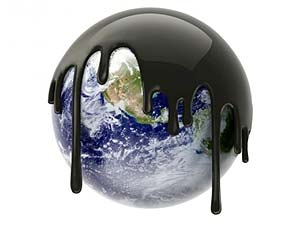
Neil Zusman (2010-08-24).
Tennessee Gas Pipeline Company, a subsidiary of El Paso Corporation, plans to increase the capacity of its 300 Line to transport new diversified natural gas supplies, including newly accessed Appalachian and Marcellus shale gas to serve the growing demand for interstate natural gas transmission service in the northeastern United States.
The BP Oil Spill (2010) has demonstrated that safety concerns in the drilling of oil and gas were not adequately regulated offshore. Onshore accidents pose a risk that needs further study and monitoring.
St. Petersburg Times. Monday, July 26, 2010. "Oil companies' gulf spill history is a dirty secret."
The oil and gas industry's offshore safety and environmental record in the Gulf of Mexico has become a key point of debate over future drilling, but that record has been far worse than is commonly portrayed by many industry leaders and lawmakers.
See Also: Tennessee Gas Pipeline Fire
Bay St. Louis, MS - EPA Region IV
At approximately 1630 hrs. on 7/6/04 an AST containing 2370 gallons of waste oil was directly struck by a lightning bolt causing the tank to explode and igniting a neighboring tank containing 3700 gallons of petroleum distillants. The waste oil tank was later located approximately 175 yards away from it's pad. The waste oil was consumed in the fire.
Tennessee Gas Pipeline (Tennessee) is one of the five interstate pipelines that make up El Paso Corporation’s Pipeline Group. Tennessee is comprised of approximately 14,200 miles and 1.4mm certificated horsepower.
The pipeline stretches from the Mexican border to Canada. Tapping supply regions in the Gulf of Mexico, Texas, Appalachia, and Canada, the Tennessee system serves markets across the Midwest and mid-Atlantic regions, including major metropolitan centers such as Chicago, New York, and Boston.
Chemicals Used in Natural Gas Operations. Includes videos, photos, background information.
"TEDX (The Endocrine Disruption Exchange, Inc.) is the only organization that focuses primarily on the human health and environmental problems caused by low-dose and/or ambient exposure to chemicals that interfere with development and function, called endocrine disruptors."
See: Democracy Now! video interview with TEDX founder, Dr. Theo Colburn: The Health Effects of Water Contamination from Fracking.
TckTckTck is an unprecedented global alliance,  representing hundreds of millions of people from all walks of life, who are united by a desire to see a strong global deal on climate change. We are made up of leading environment, development, and faith-based NGO's, youth groups, trade unions and individuals, and we are calling for a fair, ambitious and binding climate change agreement.
representing hundreds of millions of people from all walks of life, who are united by a desire to see a strong global deal on climate change. We are made up of leading environment, development, and faith-based NGO's, youth groups, trade unions and individuals, and we are calling for a fair, ambitious and binding climate change agreement.
Big Oil has some big plans to put America’s clean energy future in jeopardy by expanding the production of tar sands oil – one of the most destructive, dirty, and costly fuels in the world.
In 2008, 1,600 ducks drowned in toxic tailing ponds created to produce dirty tar sands oil.
In July, 2010, 1 million gallons of oil gushed into a Michigan river from a pipeline owned by a tar sands company.
And now, tar sands oil companies want to pump this dangerous and dirty fuel right through America's heartland, putting our public water supplies, crop lands, and wildlife habitats at risk of tar sands oil leaks.
To extract the tar sands, oil companies are digging up pristine forest in Alberta, Canada, which provides habitat for large populations of migratory birds, wolves, grizzly bears, lynx and moose.
Mining and extracting these tar sands destroys enormous swaths of important ecosystems, produces lake-sized reservoirs of toxic waste, releases toxic chemicals into our air when it is refined in the U.S., and emits significantly more global warming pollutants into the atmosphere than fuels made from conventional oil.
On Aug. 2, 2010, Pennsylvania officials fined Talisman Energy USA, formerly Fortuna Energy, of Horseheads, N.Y., $15,506 for the November 2009 spill at the Klein gas well in Troy, PA.
DEP Officials say the spill of fluids used in the fracturing process polluted a small waterway.
“DEP’s investigation in late November 2009 determined that Talisman spilled between 4,200 to 6,300 gallons of fracking flowback fluids when a pump failed and sand collected in a valve,” said DEP North-Central Oil and Gas Program Manager Jennifer Means.
The fluids flowed off the well pad and toward a wetland, and a small amount ultimately discharged to an unnamed tributary to Webier Creek, which drains into the upper reaches of the Tioga River, a cold water fishery.
Talisman successfully completed DEP’s Act 2 process for spill cleanup activities.
Talisman Energy USA had 65 violations over the past 2 1/2 years, the fifth highest in the state of Pennsylvania, as reported in a a report released Monday by the Pennsylvania Land Trust Association, which identified the Marcellus drillers with the most violations in Pennsylvania from Jan. 1, 2008 to June 25, 2010.
"Since 2002, Fortuna/TEUSA has invested in the Twin Tiers and become New York's most successful natural gas producer. On January 1, 2010 Fortuna Energy became Talisman Energy USA."
"Hundreds of people living near a natural-gas drilling site in northwest Louisiana have been forced to evacuate their homes after gas seeped into their drinking water.
Authorities in Caddo Parish evacuated at least 135 homes just south of Shreveport on Monday and Tuesday after a well being drilled nearby began spewing gas into the air and tests showed gas in local drinking water. Those who left can't return until Wednesday at the earliest, authorities said.
"We're erring on the side of safety," said Parish Commissioner Michael Thibodeaux, who represents the evacuated area.
Caddo Parish lies at the heart of the Haynesville Shale, a huge natural-gas field discovered in 2008. The field and others like it in Texas, Pennsylvania and other states have helped drive a boom in U.S. natural-gas production in recent years.
As drilling has spread to new and more heavily populated areas, however, some residents have become increasingly concerned about the possibility of air and water contamination. The industry says its practices are safe and argues that companies have drilled tens of thousands of wells in recent years with only a handful of incidents.
Problems in Caddo Parish began Sunday evening when a well being drilled by Exco Resources Inc., a Dallas-based gas producer, struck a pocket of gas much shallower than the company expected. Workers tried to control the well, but gas escaped into the air. Gas was also found in shallow freshwater aquifer that provides drinking water to many residents. Investigators will seek to confirm any link."
Roselle—cofounder of the Rainforest Action Network and Earth First!—offers a memoir of his career in radical activism—from teenage Yippie to career environmentalist, who admits he shares his generation's complicity in creating the mess we are in today and is now fighting against mountaintop-removal coal mining in Appalachia.
Video excerpt from interview by Michael C O'Connell (hawriverfilms) of Mike Roselle, from a jail cell in West Virginia. Mr. Roselle has protested mountaintop removal coal mining in West Virginia. Interview shot for upcoming project by Haw River Films.
Non-Violent Civil Disobedience has been an option for citizens to attempt to change laws that are considered unfair or are not being enforced by government regulatory agencies.
See: Student Disrupts Government Auction of 150,000 Acres Of Wilderness For Oil & Gas Drilling.
See: U.S. Fines Mine Owner $20 Million for Pollution
See: Gas Drillers Plead Guilty to Felony Dumping Violations







